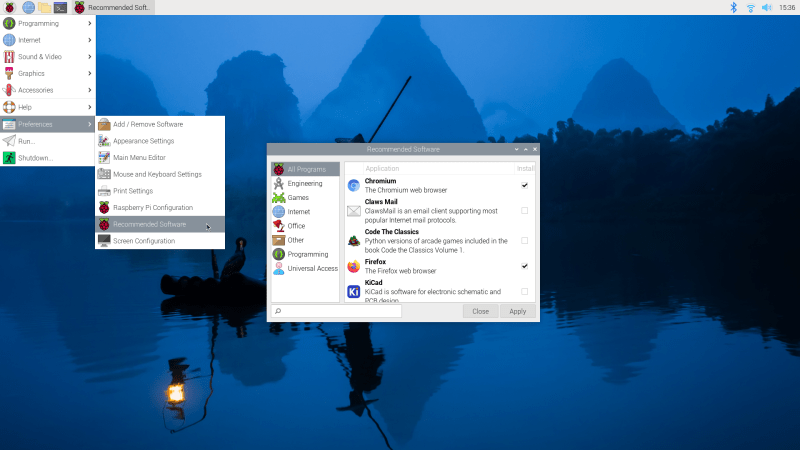
With the latest release of Raspberry Pi OS (formerly Raspbian) the end of the X Window System has become reality, completing a years-long transition period. Although this change between display servers is not something which should be readily apparent to the casual user, the change from the client-server-based X11 protocol to the monolithic Wayland protocol has a number of implications. A major change is that with the display server and window manager no longer being separate units, features such as network transparency (e.g. remote X-sessions) are no longer a native feature, but have to be implemented separately by e.g. the Wayland compositor.
For Raspberry Pi the transition to Wayland was based on the perceived efficiency and security benefits of the monolithic architecture, with the 2021 release of Raspbian (based on Debian Bullseye) testing the waters using the hybrid X11 window manager/Wayland compositor Mutter. This allowed for switching between X11 and Wayland without committing. In 2023 Mutter was replaced with the Wayfire compositor with Wayland becoming the default on Raspberry Pi 4 and 5 platforms. Along the way it was found that the Wayfire project wasn’t developing in a way that would benefit Raspberry Pi OS, which led to what should now be the final Wayland compositor in the form of Labwc.
One advantage of Labwc is that it is more lightweight than Wayfire and Raspberry Pi has judged that this means that it should be the default across all Raspberry Pi systems. Compatibility with X11-based software is maintained with the XWayland library, so that users should ideally not notice any difference after switching to Labwc even on lower-end boards. Unless you’re one one of those people who use features such as (remote) X-sessions, nothing should feel markedly different.
In addition to this big change, the new Raspberry Pi OS release also improves touch screen support with the integrated Squeekboard virtual keyboard popping up when a touch screen is detected. Finally, the remote access Raspberry Pi Connect feature sees a few tweaks, which is the feature that effectively replaces remote X-sessions. Considering how glacially slow X desktop sessions can be, this is something which can be considered an improvement, but it would be nice if there was an alternative that didn’t rely on Raspberry Pi-provided services to work.
No comments:
Post a Comment